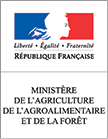Forest fires and haze are a recurring problem in Indonesia. Amid this year’s El Niño phenomenon, six provinces in Sumatra and Borneo declared a state of emergency, while neighboring Singapore and Malaysia face weeks of smoke pollution. Another cycle of forest fires will damage the local economy, drain public resources, devastate biodiversity and ecosystem services, and threaten the health and quality of life of tens of thousands of people.
In addition, the fires will seriously hamper Indonesia’s emissions reduction efforts. Forest fires are one of the leading contributors of GHG emissions in Indonesia. During his visit to Riau in 2014, President Jokowi emphasized finding long-term solutions to forest fires as key to achieving the country’s emissions reduction target of 29% by 2030.
The Ministry of Environment and Forestry has made tackling fire and haze a priority and, in June 2014, the Government of Indonesia launched National Standard Operating Procedures for Forest Fire Prevention (POSNAS Pencegahan Karhutla) involving the collaboration of key ministries and government institutions.
Analysis of fire hotspots has shown that a significant portion of the 2013 and 2014 fires in Sumatra were within palm oil and pulp and paper concessions, pointing the finger of blame at plantation companies. However, others suggested that this is not conclusive proof that companies are culpable.
Community rights and land tenure complexities in Indonesia mean that ownership and use do not always align. NASA’s Active Fire Data on the Global Forest Watch (GFW) Fires Platform point out that, in Riau, half of the fire alerts in the province occur in protected areas and/or areas where new development is prohibited under Indonesia’s forest moratorium. For example, a large number of fire alerts occurred in Tesso Nillo National Park, a protected area of 83,000 hectares that has suffered from consistent illegal encroachment and high tree-cover loss.
CIFOR produced a study to explore the central causes of fires and help find workable solutions. The research indicates that determining the exact cause of the fires is complex given they often occur outside concession boundaries or in concession areas operated by smallholder farmers.
The private sector has responded to these debates and accusations by taking decisive action. Major international corporations including Wilmar, Golden Agri Resources (GAR), Asian Agri, Cargill, and Musim Mas have adopted no-burn policies, prohibiting the use of fire in the preparation of new plantings, re-plantings or any other developments within their operation.
By signing the Indonesia Palm Oil Pledge (IPOP), member-companies have reaffirmed their commitment to ban the use of fire in their operations and throughout their supply-chains.
Indonesia’s fires and haze have implications across multiple scales, including regional investment and political relations, as well as international trade and global commodity supply chains. However, it is a challenge that will have to be met at home and with the participation of the public sector, the private sector, and the people. This discussion forum will explore the potential for the private sector to work with government and the local people to prevent and combat forest fires in Indonesia, and the challenges they will face. It will also address the three most important actions for companies to boost efforts to resolve forest fires in Indonesia?
The organizer will draw up a white paper based on the result of the discussion – to be used as a reference for all stakeholders. Successful implementation will then contribute to Indonesia’s efforts to achieve its INDC target and reduce potential threats to quality of life, local economy, biodiversity, ecosystem balance, and emission reduction.
Key questions addressed
- What are the key non-technical (social, economic, political) challenges in resolving forest fires in Indonesia?
- What role can large firms, including IPOP members, play in:
- Practically supporting the local governments’ implementation of the POSNAS and other fire mitigation strategies?
- Through their operations and across their supply chains, supporting the national government in meeting their climate change mitigation commitments and GHG reduction targets?
- Directly incentivizing more sustainable land use practices among smallholders and local communities in and surrounding their plantations and mills?
- How can key stakeholders support the resolution of land tenure and land use issues, as key underlying factors to address in finding long-term solution for forest fires?
Background reading
New forest fires threaten Indonesia’s protected areas
Indonesia’s Forest Fires Reignite, Threatening Protected Areas and Peatlands
New maps reveal more complex picture of Sumatran fires
Haze returns to Singapore – and we can expect more of it, new study warns









































